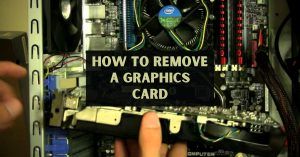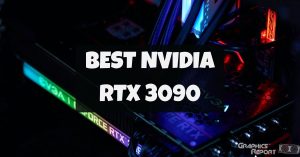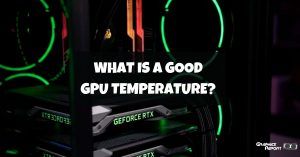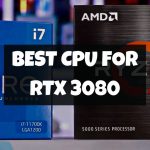
The graphics card is an almost essential part of any computer these days. After all, it is responsible for pushing all the pixels you see on your screen and render all those frames you want in your games. Sure, an integrated graphics chip can do the job.
Still, a dedicated unit is a gateway to better gaming and workstation performance and enables you to power multiple high-res displays simultaneously.
Much like all the other components in a PC, it is also prone to failure. There is no guaranteed lifespan of a GPU; it can last decades if you use it with care, or it can die in a couple of weeks because of an electrical failure beyond your control. However, there are usually signs of impending doom that you can tell to figure out if your graphics unit is dying.
Before jumping to conclusions, you first need to figure out if the problem is software-related or a hardware level issue, and more importantly, can it be resolved?
A lot of the time, the answer, fortunately, is yes, and you don’t need to throw some cash towards a replacement immediately. This guide will help you know if your GPU is actually dying or not.
Signs, Warnings, And Symptoms That Tell If Your Graphics Card is Dying
There are a couple of ways to tell if it is dying, and as I mentioned before, it could either be a software level issue or a hardware fatality, the latter being seldom. You will need to diagnose the problem yourself via all the symptoms you experience to get to the root of the problem and troubleshoot.
1- Blue Screens.
Ah yes, the infamous blue screen of death. You can face this screen for several reasons, and it could be linked to various hardware installed in your system like the RAM, storage drives, or video cards. There is no surefire way to tell what exactly causes the blue screen as it is different in every case and can be caused by literally anything failing.
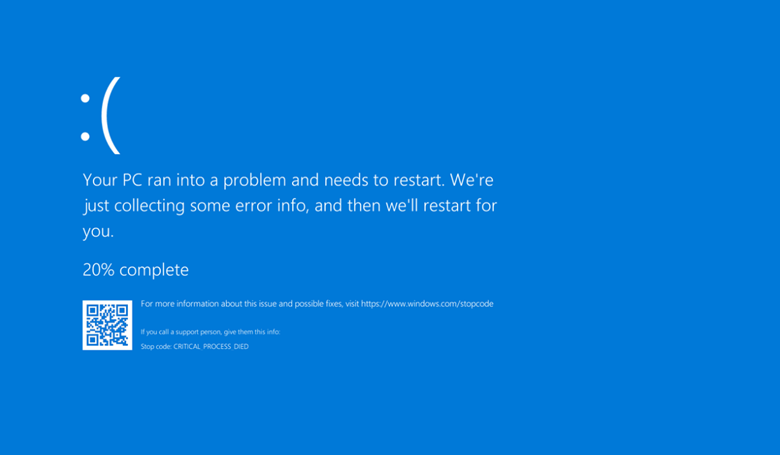
However, if your computer shows the blue screen when you are playing a game, rendering something intensive, or doing any other task that leverages your GPU, then there is a good chance that your graphics processing unit is, in fact, the culprit and the reason behind the blue screens.
2- Stumbling (Freezing).
If your system suddenly freezes out of nowhere without giving you a blue screen error or even completely blacking out the screen, there is a hardware problem in the mix here. Your computer can freeze for multiple reasons related to the RAM, storage, and other components of your PC, including the GPU.
Sudden freezing does make a good argument for a broken graphics card. Still, it could very well be the fault of another part of your computer, so don’t make a judgement just yet and keep exploring different avenues and troubleshoot as much as possible before you are 100% sure that it’s your graphics unit.
3- Lag Or Stuttering.
Frequent lag and stuttering are one of the most prominent signs of a dying GPU. While playing a game, if it lags without any reason, latency/server connection, and you can notice the game stuttering, then your GPU becomes an obvious candidate for accountability here. You may also see vast and unnecessary FPS drops in your game while playing, which makes the gameplay experience horrible.
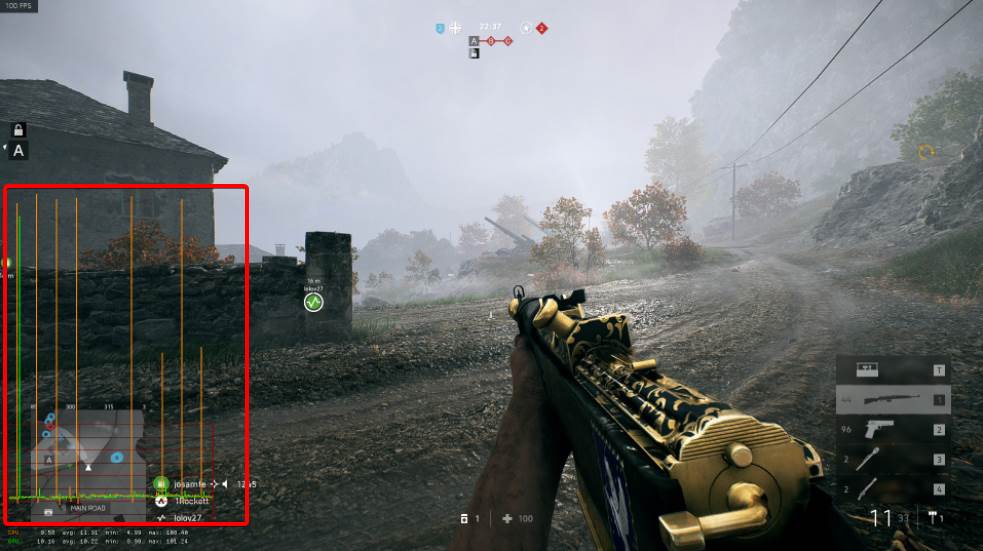
But just like the problems mentioned above, this can be caused by several other software or hardware reasons like faulty RAM, the game files itself being corrupt, incompatible or outdated drivers, or just the game not being properly optimized for your set of hardware. Still, you cannot be sure without proper diagnosis, and your GPU could be at fault here.
4- Strange Artifacts.
When your GPU’s glory days are over and it’s nearing its final breath, you will likely start seeing strange artifacts on your screen. These artifacts usually start from just small dots on the screen but can quickly transform into bizarre lines and weird out of place shapes along with strange patterns that do not look pleasing.
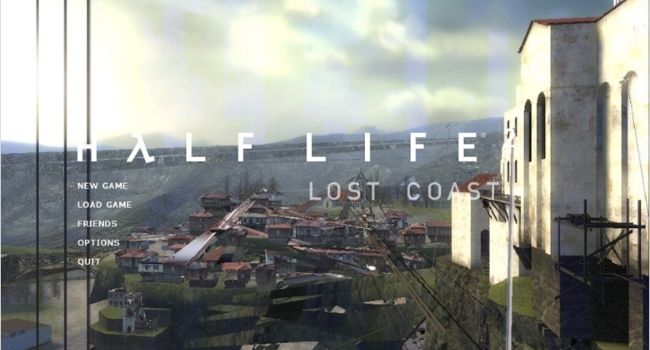
You will often see artifacts only when your GPU is under load, and that will prove that your graphics card is dying. Artiricanting can happen for various reasons, including dust accumulation, extreme overclocking, and high temps/heat. So if you see these artifacts on your screen, then it is most definitely on life support at this point.
5- Screen Glitches.
This is another very common deathbed for a soon-to-be-dead GPU. Wrong out-of-place textures, distorted graphics, inaccurate colors, and weird-looking lines/shapes all count as glitches. You may see glitches on your screen because of a faulty monitor, broken cable, or even the game itself being buggy. Still, if the weird glitches keep coming back in every different game and even after you restart your computer multiple times, then it’s your graphics unit; it’s about to die.

A great way to check this and be sure is to use a different monitor (if possible) and see if the problem persists. And if you have another video card lying around, then you can also quickly test that with your system to see if your glitch-causing graphics unit is OK or if I was right in the previous paragraph.
6- Fan Noise.
Every single graphics unit comes with fan(s) built-in for efficient cooling. These fans spin up faster to compensate for more heat generation while under load and stay relatively quiet or even off when you are idling. Suppose you can noticeably hear the fans spinning at the highest RPM and hear them imitating an airplane taking off. In that case, you should immediately check your temps to be sure it isn’t overheating, as that can deteriorate a GPU’s lifespan quickly.
While an audible fan noise doesn’t necessarily mean your GPU is dying, it’s a good safety measure to ensure that it isn’t overheating, especially without reason. You should also check to make sure that all of your fans are spinning adequately and that the working fans aren’t compensating for and providing the dead fan’s cooling to the as well. Dust buildup is usually the most common reason behind high temps, so keep clean your card regularly to preserve its life
7- Driver Crashes.
Drivers are essential to get the most out of your GPU and prevent any issues from occurring in your system. An outdated driver can cause it to act finicky and cause weird heating issues and driver crash errors in games. So, make sure that your drivers are up to date and working correctly.
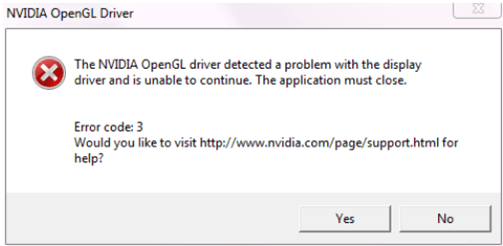
Seldom, a new driver update can negatively impact your system, and if that’s the case, you can roll back to the previous version and stay on it until issues with the new one are resolved, or an updated driver is released. If you have an older graphics unit, then new drivers can do more harm than good, so make sure to do some research about your specific model to find the right and best drivers possible.
8- Crashes In The Game.
Recurrent random crashes in your game are the biggest telltale of a dying GPU (unless you literally see your PC on fire). This indicates that there is something wrong with it that is making your game crash repeatedly.
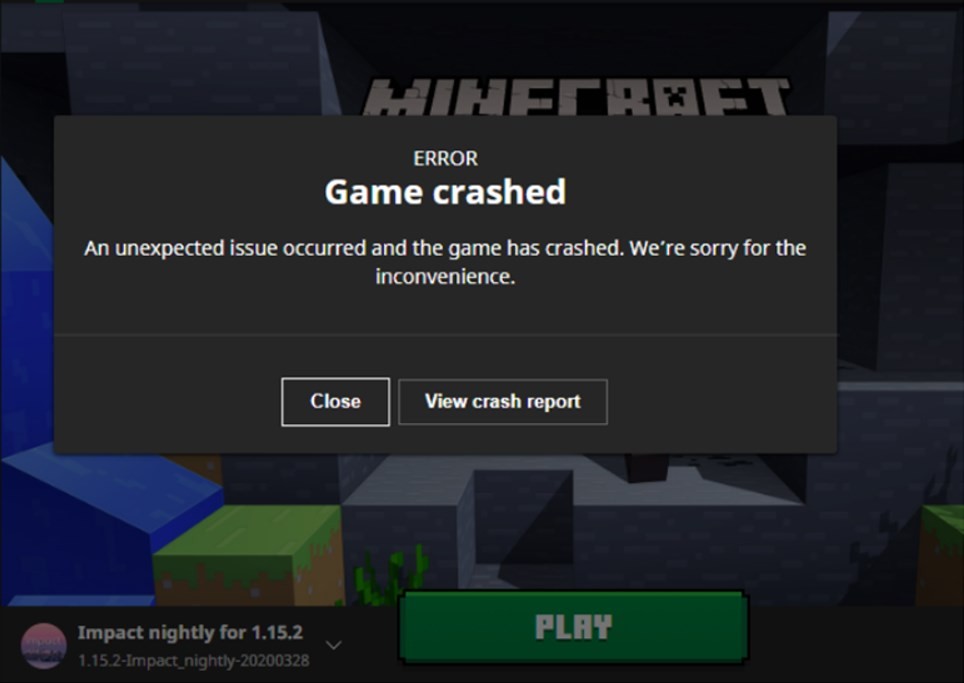
Even though one can be pretty much sure that the graphic card is about to die, I would suggest you test different games and see if all of them are crashing because you never know; the game itself (or its files) could be corrupt. If you experience crashes in all games and that too frequently, then your graphics unit is very close to its death.
How To Diagnose A Dying Graphics Card? (Troubleshooting)
This is the next step in the line for your potentially dying card, to see if it really can be fixed or is it truly dead. I mentioned some solutions above in all the warning signs. We are now going to look into troubleshooting in detail. Let’s look at how you can diagnose a dying GPU and how you can further troubleshoot it yourself.
#1- Rollback OR Update Your Drivers.
Depending on your GPU’s generation and architecture, you will need to either update or roll back your graphics drivers. The drivers help your computer communicate with the GPU and allows it to work correctly. No matter how old or new your graphics unit is, problems with drivers almost always arise, so be on the lookout for those.
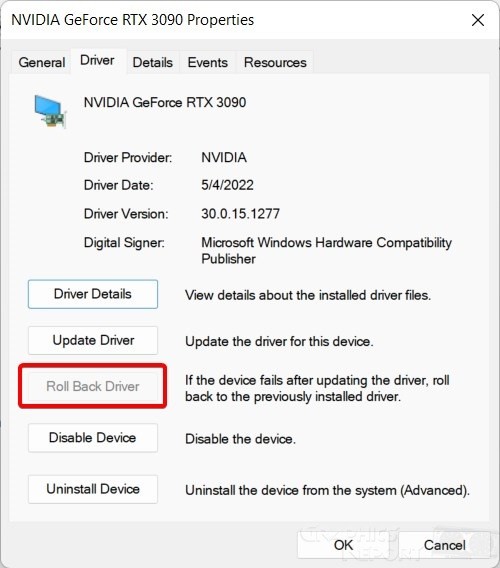
If you have an older graphics card, your best bet is to run on older drivers as new drivers tend to worsen the performance and cause issues. You should still check online before downloading and installing any driver since some modern games don’t run properly on older drivers.
On the contrary, if you have a more recent GPU, then keep your drivers up to date and run on the newest drivers available. If the latest drivers are known to be buggy and cause problems, then roll back to the previous stable version for the time being.
#2- Check Your Hardware For Damage Or Debris.
Your GPU can build up debris in its shroud and around the fans, which can make it overheat, thus deteriorating it and potentially killing it even when it’s working perfectly. Any kind of damage to the graphics unit can also be fatal; maybe it got slightly damaged or bent in shipping, perhaps a fan blade broke, or if worse comes to worst if damage has been caused to the PCB of the unit.

You will need to remove your card from the case and inspect it closely. Check for any dust buildup in the card and check if any debris has accumulated and piled up around or behind the fans. If there is dust and debris, then you can easily clean it with a q-tip. Just be gentle with the fans and treat the card as if it’s in the ICU.
Furthermore, if you can and know how to, then open up your GPU and strip it bare to its PCB and carefully examine the backplate, shroud, PCB itself, and the fans for any visible damage or debris/dust. Again, debris can easily be cleaned with a q-tip and some tissues.
Still, suppose you see actual hardware damage. In that case, you need to take it to a professional repairer for additional checking, or if it’s under warranty, then you can send it back to the manufacturer for a replacement.
#3- Cool It Down.
Constant overheating and operation at high temps can significantly aggravate the situation and decrease your GPU’s lifespan. Constant overheating will affect it negatively and wear it down much quicker than it’s supposed to. Whatever is causing these high temps will need to be equated out of the mix; you will end up with a fried unit.
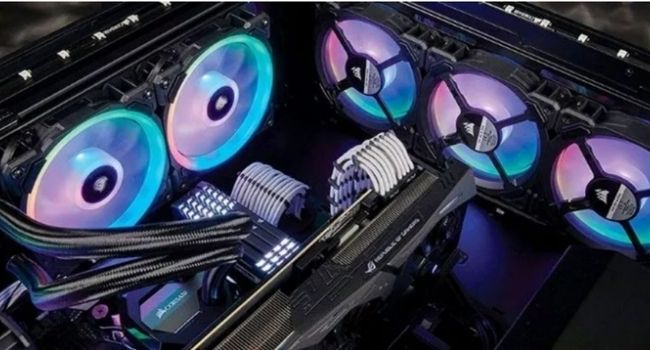
When your GPU reaches an incredibly high temperature, the fans start spinning at the maximum RPM. However, the temps still cannot be controlled; then your graphics unit will start to “thermal throttle.”
This happens when your graphics unit reaches high temps, and the coolings solution fails to reduce the temperature; so the card itself begins to turn down its performance to generate less heat which, as you can imagine, results in worse performance and some extreme cases, and can kill the card if the temps do not come down.
First, to combat this, monitor your temps under load and idle and see if they are higher than they should be in both conditions. If your temps only reach the gates of hell under load, then it’s safe to say that your cooling is insufficient.
Check your airflow, cable management, and dust buildup to see if they are causing this; otherwise, you would need to add better cooling to your case (or replace it entirely). Moreover, you will need to check the unit itself to see if dust is clogging up the fans or if the thermal paste has dried up. Long story short, you need to cool down your card.
#4- Make Sure It’s Properly Seated.
A graphics unit sits nice and tight in the PCIe x16 slot on your motherboard. There is a small tab/lever-like thing right next to the slot that secures the graphics unit in place.
Make sure that your video card is seated correctly into the slot and secured by that latch. If the card isn’t attached properly or is hanging loose, then dust and lint can easily build up around its connector and potentially damage it.
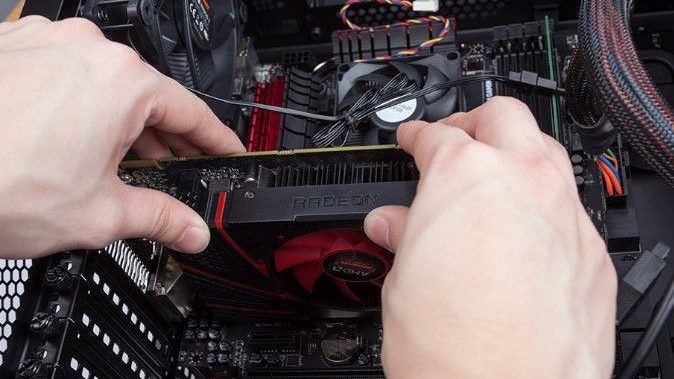
Just for the sake of the PC Gods and good PC building practice, I would suggest you take out the GPU and make sure it’s appropriately seated into place this time with little to no sagging.
If it requires additional power (which most modern ones do), then check that those PCIe power cables are plugged in the graphics card and the power supply properly as well.
#5- Check The Video Cable.
You’d be surprised to know how many times the dang cable is the problem in many tech-related instances. It’s a general rule in the tech world that always starts troubleshooting with the easiest and smallest things like, case in point, the video cable. This is the cable that connects your graphics card to your monitor.
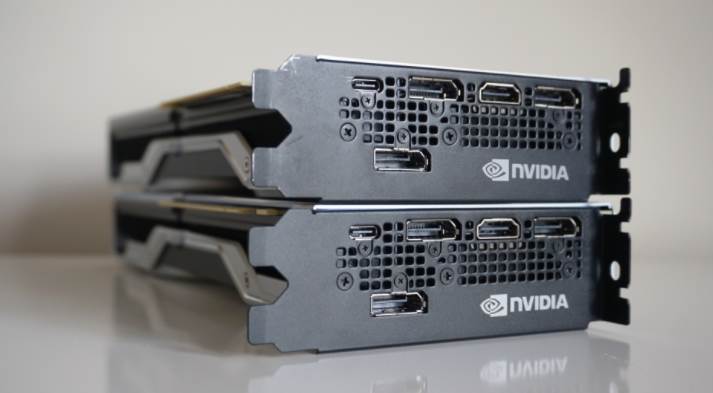
This would be either an HDMI or DisplayPort cable (or VGA/DVI if your unit is ancient). Try a different cable to see if that works, and make sure the cable is plugged in tightly on both ends and is not loose.
#6- Stress Testing.
After you’ve checked everything, the last step before the inevitable would be to stress test your GPU. There are many different benchmarks out there that allow you to put your graphics under stress while rendering a graphically intense scene. In the end, you will get the results, which include the highest, lowest, and average FPS along with your temps.
The most popular GPU benchmark is UNIGINE’s Heaven Benchmark, and you can use it to stress-test easily to see if something is wrong with your graphics card, if it crashes mid-run, if you see weird bugs and glitches on your screen, or if it’s simply underperforming. This will give you a good idea about the PC’s current condition and also simulate the load of playing games on the graphics unit.
#7- Replace it.
This is a point break. You have tried everything, and all signs lead you to a dying graphics card, one that cannot be fixed, and it’s also out of warranty, so manufacturer replacements are also out of the equation. And if it can be repaired but you don’t want to get it repaired from a third party, then you are left with only one choice: buying a new card.
Luckily, you have many options from both AMD and Nvidia (perks of a competitive market, eh?) in various budgets. Fancy some Ray Tracing and DLSS?
Go for Nvidia’s latest RTX 2000 and 3000 series units. Want the best bang for your buck and better performance than the competitor in the same price range? Well, then AMD is your friend.
Whatever you choose to go with, make sure it’s going to fulfill your specific needs and that you are going to be happy with it. I always suggest that if you are looking to save as much money as possible, then satisfy your performance needs first and then go for aesthetics.
Don’t overspend on a new GPU you’re not going to fully utilize, and keep everything in mind like future upgradability and the games you want to play.
Final Thoughts!
A dying graphic card will breathe its last breaths showing what is killing it or will kill it, and that allows you to diagnose and examine the symptoms to see whether it can be saved or not.
Most of the time, it will work fine until and unless there’s a problem in the mix like high temps or incompatible drivers. Many signs will precede that will warn you of an impending crisis, and you can figure out if your unit is acting finicky because of those signs.
Fortunately, it’s relatively easy to figure out what the problem is, and there are ways you can try troubleshooting your GPU to fix it.
But sometimes, just because of the nature of it being an electrical component, it can die on you without giving you the chance to save it.
In that case, the only thing you can do is give it back to the manufacturer for a replacement or get it repaired by a 3rd party (if possible). If you do not want any of this hassle, then shelling out for a brand spanking new GPU is your ideal bet.
Related guides:
- How to underclock gpu
- How to overclock gpu
- How to vertically mount gpu
- How to choose a graphics card
- How to increase VRAM


